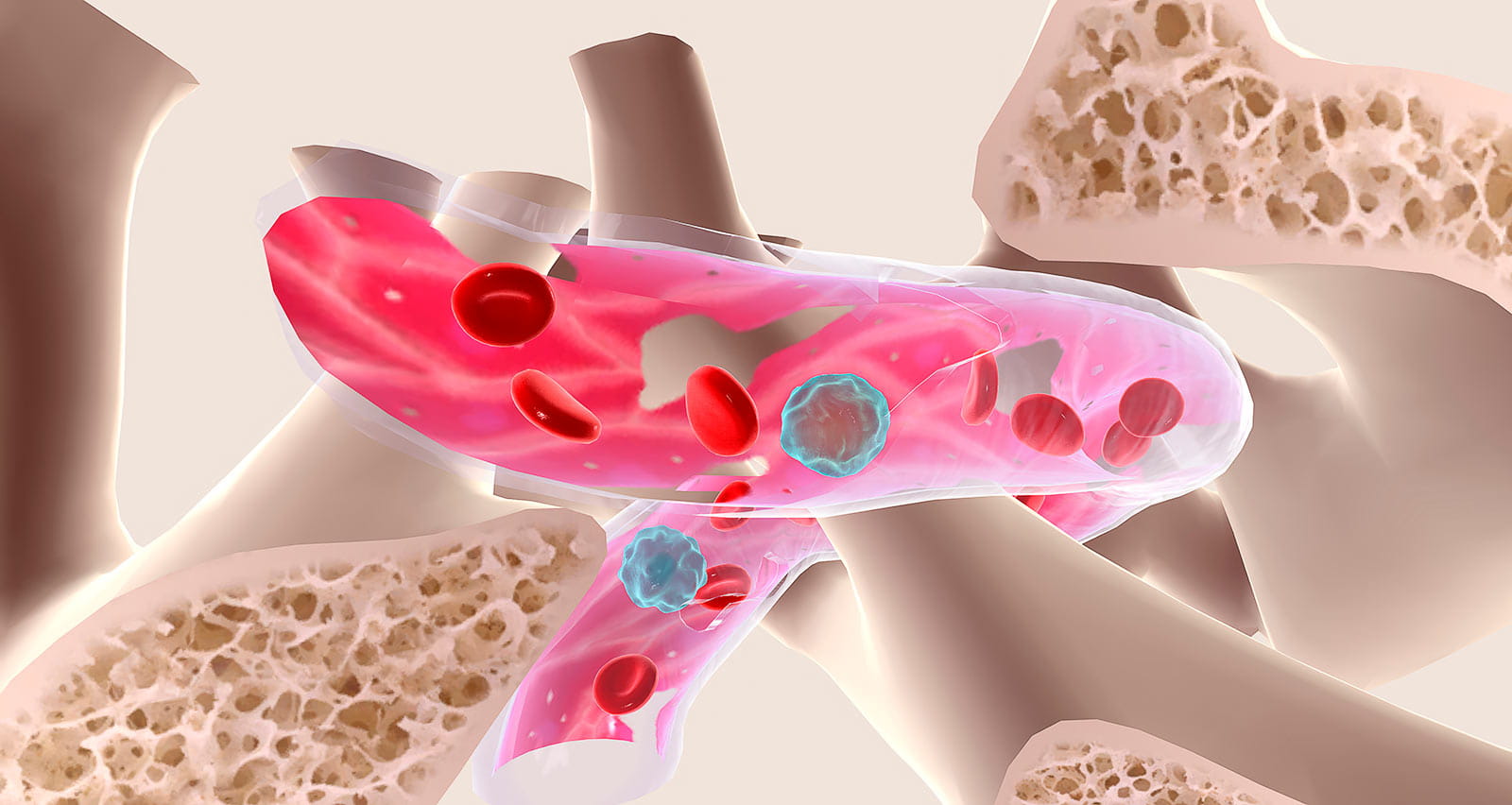
What Are Myelodysplastic Syndromes (MDS)?
Myelodysplastic syndromes (also called myelodysplasia) are a category of cancers in which immature blood-forming cells in the bone marrow do not mature into healthy blood cells. In MDS, the defective blood cells die in the bone marrow or just after entering the bloodstream. Over time, the unchecked reproduction and spread of the immature, defective cells result in too few healthy cells in the blood.
Left untreated, MDS can lead to problems such as fatigue caused by too few healthy red blood cells (anemia), infections caused by a shortage of healthy white blood cells (leukopenia) and bleeding caused by abnormally low levels of blood-clotting platelets (thrombocytopenia). In addition, MDS can transform into to a type of blood cancer called acute myeloid leukemia (AML).
Your health is important. Get expert care.
Offering in-person, video and telephone visits. Call 216-844-3951 today to see which option is right for you.
Learn more about virtual visitWhat Causes Myelodysplastic Syndromes?
The bone marrow in healthy people produces new, immature blood cells that mature over time. Myelodysplastic syndromes occur when something disrupts this process to prevent the blood cells from maturing. Most myelodysplastic syndromes do not have a known cause. However, certain risk factors are associated with these cancers, including:
- Older age: The majority of people diagnosed with myelodysplastic syndromes are older than 60.
- Radiation treatment or chemotherapy: Previous radiation therapy or chemotherapy for other types of cancer can increase a person’s risk of developing a myelodysplastic syndrome.
- Exposure to certain chemicals: Benzene and certain other chemicals have been linked to the development of myelodysplastic syndromes.
Types of Myelodysplastic Syndromes
The World Health Organization divides myelodysplastic syndromes into subtypes based on the type of blood cells (red cells, white cells and platelets) involved. Myelodysplastic syndrome subtypes include:
- Myelodysplastic syndromes with single-lineage dysplasia: In this MDS, either the white blood cells, red blood cells or platelets are low in number and appear abnormal under the microscope.
- Myelodysplastic syndromes with multilineage dysplasia: Two or three blood cell types are abnormal under the microscope.
- Myelodysplastic syndromes with ring sideroblasts: A low number of one or more blood cell type characterizes this MDS. Another characteristic of this subtype is the presence of ring sideroblasts, which are immature red blood cells with nuclei surrounded by rings of iron.
- Myelodysplastic syndromes with isolated del(5q) chromosome abnormality: This MDS subtype is characterized by low numbers of red blood cells along with a specific mutation in the cell DNA.
- Myelodysplastic syndromes with excess blasts: With this subtype, any of the three types of blood cells might be low and appear abnormal under a microscope. In addition, very immature blood cells (blasts) are present in the blood and bone marrow.
- Unclassifiable myelodysplastic syndrome: In the unclassifiable variety, reduced numbers of one or more types of mature blood cells are present that may appear abnormal under the microscope. In addition, some blood cells may appear normal but contain DNA changes associated with myelodysplastic syndromes.
Signs and Symptoms of Myelodysplastic Syndromes
People with a myelodysplastic syndrome might not show any signs and symptoms of disease at first.
As the disease progress, symptoms may include:
- Fatigue
- Shortness of breath
- Unusual paleness due to a low red blood cell count (anemia)
- Easy or unusual bruising or bleeding due to a low blood platelet count (thrombocytopenia)
- Tiny red spots just beneath the skin caused by bleeding (petechiae)
- Frequent infections due to a low white blood cell count (leukopenia)
Note that other cancers and illnesses can cause the above symptoms. Always inform your doctor if you have symptoms of disease.
How Are Myelodysplastic Syndromes Diagnosed?
Procedures and tests used in the diagnosis of CML include:
- Physical exam: If your doctor suspects you have a myelodysplastic syndrome, they will usually perform a physical exam and go over your medical history.
- Blood tests: A complete blood count (CBC) with differential test is used to measure the number of white blood cells, red blood cells and platelets in a blood sample. In addition to measuring the numbers of such cells, your doctor will look for any unusual changes in the cell size, shape and appearance.
- Bone marrow test (bone marrow aspiration and biopsy): During a bone marrow biopsy and aspiration, a thin needle is used to extract (aspirate) a small sample of bone marrow, typically from the back of the hipbone. Also, a small piece of bone with its marrow intact is removed for testing (biopsy).
In addition to standard testing, more specialized tests can done on your blood and bone marrow samples to identify cell characteristics that are helpful in determining the type of myelodysplastic syndrome you may have, your prognosis and the best treatment options.
How Are Myelodysplastic Syndromes Treated?
Treatment of myelodysplastic syndromes usually focuses on slowing the progression of the disease, relieving symptoms and preventing complications. When a person is diagnosed with a myelodysplastic syndrome but does not have any symptoms, delaying treatment may be recommended. In this case, your doctor may recommend monitoring the condition through regular exams and lab testing to see if the disease progresses.
Treatment options include:
- Blood transfusion
-
Red blood cells and platelets in people with a myelodysplastic syndrome can be replaced with healthy blood cells from donors to help control symptoms of MDS.
- Medication
-
Medication therapy for myelodysplastic syndromes may include some combination of the following:
- Erythropoiesis-stimulating agents (ESAs) and other growth factors: ESAs are used to increase the number of mature red blood cells that the body can produce and reduce the effects of anemia. Another growth factor called granulocyte colony-stimulating factor (G-CSF) may be given with ESAs to optimize the effectiveness of the treatment.
- Luspatercept: This medication is indicated for the treatment of anemia in certain MDS patients who need regular red blood cell transfusions but have not responded well to ESA therapy or cannot receive ESAs. Luspatercept helps restore erythropoiesis (red blood cell production) by increasing the number and improving the quality of mature red blood cells.
- Lenalidomide: Patients who have a MDS associated with an isolated del(5q) chromosome abnormality and who require frequent red blood cell transfusions may be prescribed lenalidomide (Revlimid), which is a medication used to reduce the need for red blood cell transfusions.
- Azacitidine and decitabine: These medications are used to treat MDSs by destroying abnormal cells that divide rapidly. They also help genes involved in cell growth to function normally. Azacitidine and decitabine treatment may slow or stop an MDS from developing into acute myeloid leukemia (AML).
- Immunosuppressive therapy: Used to suppress or control the immune system, these medications are indicated for the treatment of certain MSDSs. These medications, which include antithymocyte globulin (ATG) therapy, can reduce the need for red blood cell transfusions.
- Antibiotic therapy: Antibiotics may be administered to fight infection.
- Chemotherapy: Chemotherapy uses drugs to kill cancer cells. Most often, chemotherapy drugs are injected directly into a vein, a muscle or under the skin, or else taken orally. MDS patients who have a high number of blasts in their bone marrow have a high risk of developing acute myeloid leukemia (AML). Such patients may be treated with the same type of chemotherapy typically used for patients with AML.
- Bone Marrow Transplant
-
A bone marrow transplant, also known as a stem cell transplant, is the only treatment option that can potentially cure MDSs. This procedure, which replaces abnormal bone marrow with marrow from a healthy donor, is performed after high doses of chemotherapy or radiation are employed to destroy leukemia-producing bone marrow.
Because a bone marrow transplant carries a high risk of complications, this procedure is reserved for patients deemed healthy enough to endure it. In some cases, less powerful chemotherapy drugs can be used to reduce the risks for older adults and other patients who might not otherwise be considered for a bone marrow transplant.
The Stem Cell Transplant Program at UH Seidman Cancer Center has provided advanced bone marrow and cord blood transplant services for more than 45 years. Since the program’s inception, we’ve performed over 3,500 stem cell transplants.
Myelodysplastic Syndromes Prognosis
Some people with a MDS live for years and require little or no treatment. For others, their MDS is more aggressive and may develop into acute myeloid leukemia (AML), which is an aggressive, life-threatening cancer that requires more urgent treatment. About one third of people with MDS will eventually develop AML. Although AML is a serious illness, the disease is often treatable and even curable with chemotherapy with or without a bone marrow/stem cell transplant.

Clinical Trials Available for Myelodysplastic Syndromes and Other Blood and Bone Marrow Cancers
Access to clinical trials for leukemia and related blood and bone marrow cancers gives patients more innovative treatment options. We offer new therapies that are safer, more tolerable and more targeted to help minimize side effects. Our physicians are the principal investigators for many of these cancer clinical trials, offering hope to both newly diagnosed patients and those who have relapsed.
Clinical Trials for Leukemia
Giving to UH Seidman
Make a gift today to support leukemia research and patient care at UH Seidman Cancer Center.
Ways To Give

